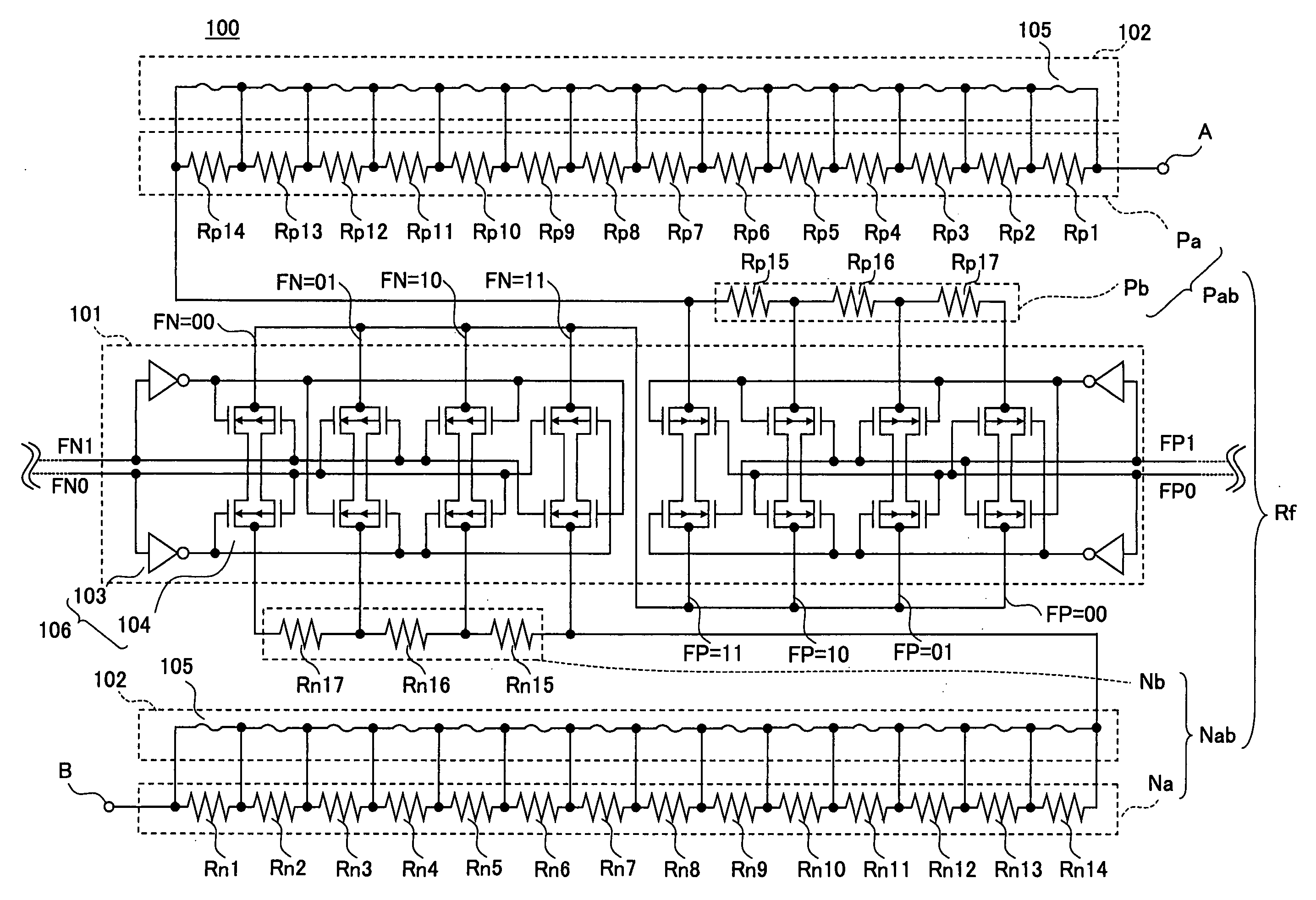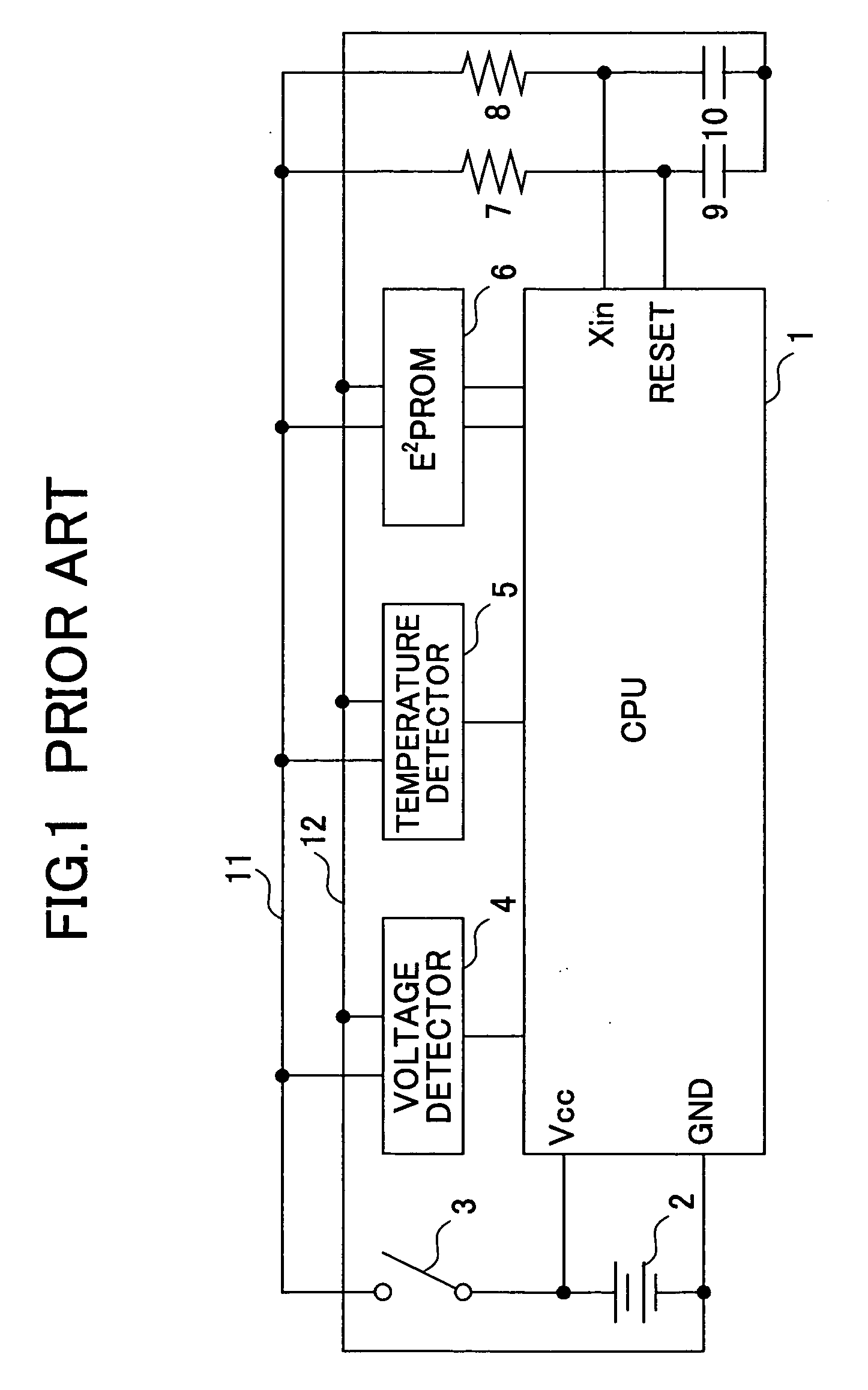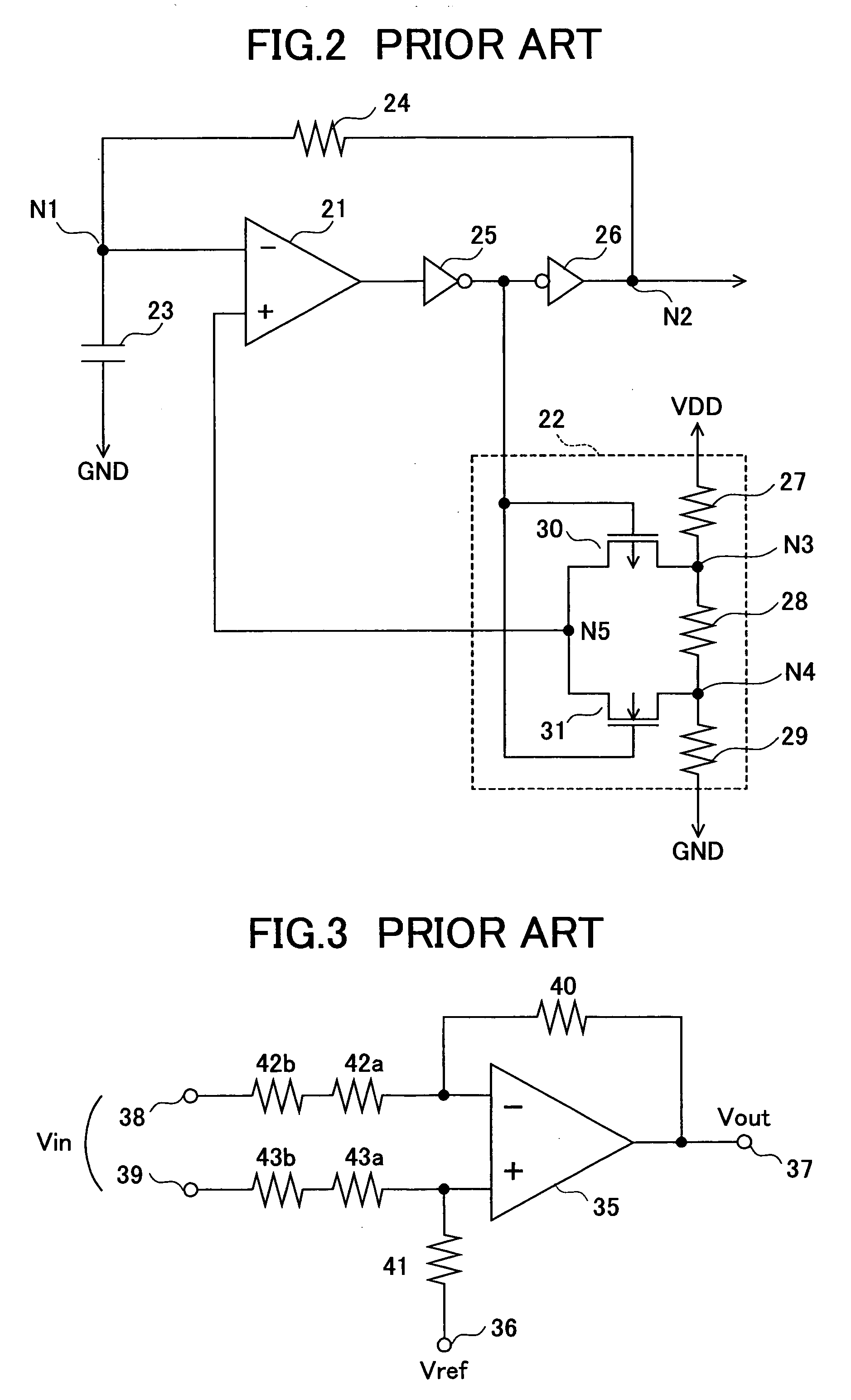Semiconductor device, method of manufacturing the same, and electronic device
a technology of semiconductor devices and resistive elements, which is applied in the direction of solid-state devices, pulse generators, pulse techniques, etc., can solve the problems of low accuracy of resistance control, affecting the operation of the device, etc., to achieve high sheet resistance, good operational characteristics, and high accuracy
- Summary
- Abstract
- Description
- Claims
- Application Information
AI Technical Summary
Benefits of technology
Problems solved by technology
Method used
Image
Examples
first embodiment
[0066]FIG. 4 is a schematic diagram illustrating a semiconductor device 100 including a resistive element according to a first embodiment of the present invention.
[0067] Referring to FIG. 4, the semiconductor device 100 includes a resistive element Rf formed between a terminal A and a terminal B. The resistive element Rf includes resistive elements having different temperature coefficients, that is, a resistive element Pab having a positive temperature coefficient and a resistive element Nab having a negative temperature coefficient. The resistive elements Pab and Nab are connected in series, for instance.
[0068] The resistive element Pab includes multiple resistors of a positive temperature coefficient connected in series. The resistive element Nab includes multiple resistors of a negative temperature coefficient connected in series. The semiconductor device 100 includes a connection change part that changes the state of connection of these resistors. It is possible to control the...
second embodiment
[0113] The semiconductor device 100 may also be configured as follows. FIG. 6 is a schematic diagram illustrating a variation (configuration) of the semiconductor device 100 according to a second embodiment of the present invention. In FIG. 6, the same elements as those described above are referred to by the same numerals, and a description thereof is omitted.
[0114] Referring to FIG. 6, the semiconductor device 100 includes a detection part 111. The detection part 111 detects a change in the environment of the semiconductor device 100, such as a change in temperature. Employment of the detection part 111 makes it possible to provide the semiconductor device 100 with good characteristics irrespective of environmental changes.
[0115] The connection change part 101 may select the sheet number of the positive functioning resistors (the number of resistors of the positive temperature coefficient that function, that is, substantially get connected, in the resistive element Rf) and the sh...
third embodiment
[0121] The semiconductor device 100 may be applied to a wide variety of electronic devices. FIG. 7 is a circuit diagram illustrating an electronic device 150 in which the semiconductor device 100 is applied to a CR oscillation circuit according to a third embodiment of the present invention. InFIG. 7, the same elements as those described above are referred to by the same numerals, and a description thereof is omitted.
[0122] In the case of FIG. 7, the number of resistors of the semiconductor device 100 is changed from that in the case of FIG. 4. Thus, the number of resistors and the sheet number of resistors are changed as desired when employed in the semiconductor device 100. The same holds true for the following embodiments.
[0123] Referring to FIG. 7, the electronic device 150 having an oscillation circuit includes a comparator 121, a reference voltage generator circuit 120, a capacitor 130, the semiconductor device 100, and inverters 122, 123, and 124. The capacitor 130 and the ...
PUM
 Login to View More
Login to View More Abstract
Description
Claims
Application Information
 Login to View More
Login to View More - R&D
- Intellectual Property
- Life Sciences
- Materials
- Tech Scout
- Unparalleled Data Quality
- Higher Quality Content
- 60% Fewer Hallucinations
Browse by: Latest US Patents, China's latest patents, Technical Efficacy Thesaurus, Application Domain, Technology Topic, Popular Technical Reports.
© 2025 PatSnap. All rights reserved.Legal|Privacy policy|Modern Slavery Act Transparency Statement|Sitemap|About US| Contact US: help@patsnap.com



